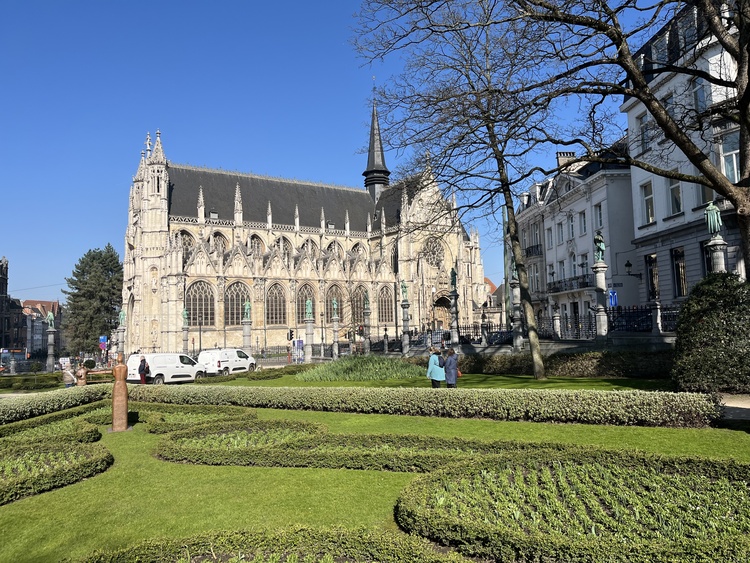


Here, we would have already been outside the first medieval city wall of Brussels. This was a cemetery as well as the practice grounds of the crossbow guild. This guild built a small chapel here in the early 14th century, and when a woman brought a miraculous statue of the Virgin Mary to this chapel, stolen from their great rival Antwerp, many pilgrims came to visit the chapel. Pilgrims were the tourists of the Middle Ages, they brought in a lot of money and as a result, in the 15th century the chapel was replaced by the elegant Gothic church of Our Blessed Lady of the Sablon.
The heydays of this area was the 16th century. The richest and most powerful aristocratic families had a residence (mansion/palace) here because of its proximity to the Place to Be at that time, Charles V’s Coudenberg Palace. Unfortunately, most of these mansions have disappeared. Leopold II has, again, something to do with that. The only palace that has survived is the Egmont Palace. If you turn around towards the Fountain in the park, you can see the back façade of the Residence of the Count of Egmont just behind the park.
Let’s have a closer look at this beautiful little park. First, I want to warn you not to step on the grass or touch the flowers. They are very strict. You might not see the park guards, but they are there, hiding behind the bushes somewhere. They’ll use their whistle when they have to.
The park is only an addition of the late 19th century, but its ‘theme’ is the 16th century, the golden age of the Sablon area. Have a closer look at the fence and its statuettes. Each statuette represents a trade that was popular in the 16th century, for instance the bricklayers, the tilers, roofers etc. Also the central piece of the park, the fountain with sculptures has a 16th century link: the two men on top were two important top aristrocrats, the counts of Egmont and of Horn. They rebelled against the King of Spain Philippe II, who was also the ruler here in the Spanish Netherlands, and they both paid for it with their lives. Yes, the same Count of Egmont whose palace is located just behind the park.
There’s one more 16th century link: on both sides going up the steps, you can see some sculptures. You probably guessed it: famous and important persons of the 16th century. They were all part of the humanist movement, you could consider most of them as some of the first scientists including cartographers and botanists. The most famous one is without a doubt Mercator, most renowned for creating a world map based on a new projection —an innovation that is still used in nautical charts. You can recognize him by the globe he’s holding. Have a look at the other statues and see if you know some of the other humanists.